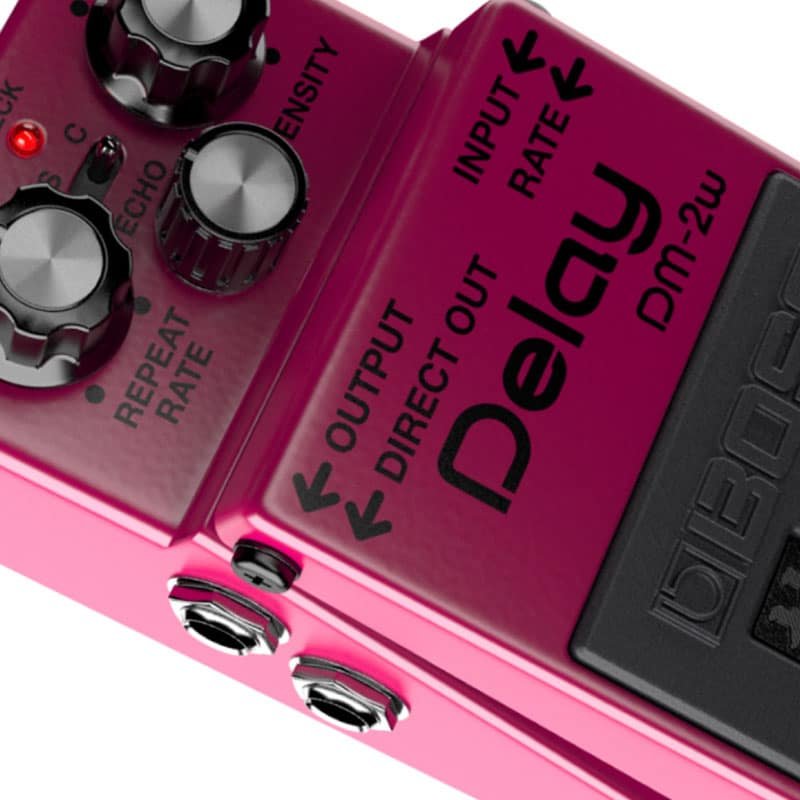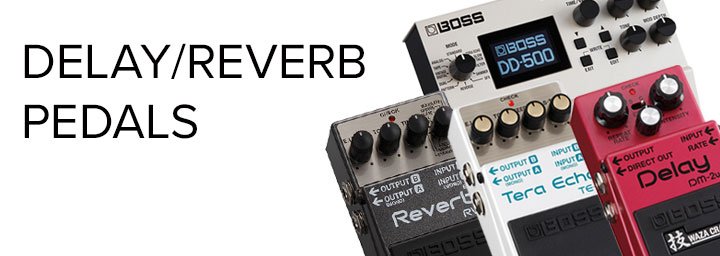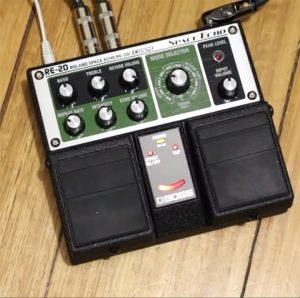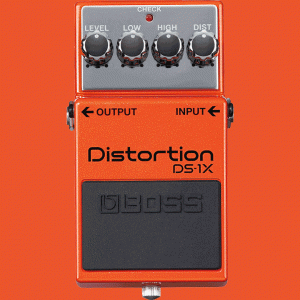A Chronicle of BOSS Delay Stomps Since 1978

Just a few of the many BOSS delay pedals through the years.
Spanning the last four decades, BOSS has created well over 100 different types of effects pedals, and each one delivers both colorful sounds and colorful looks. Among them are everyday guitar staples like overdrive, distortion, and reverb, as well as unique effects like Slow Gear and Slicer, just to name a few. And, of course, BOSS pioneered the famous chorus pedal in 1976, a now-standard effect that’s regularly used by players in every style of music.
Over the years, a rather significant number of BOSS pedals have been devoted to the delay effect, another essential sound tool for musicians, and guitarists in particular. To date, 20 different models have provided delay and echo effects in one form or another. Sit back and settle in as we run down the entire history of BOSS delay pedals through the decades, from 1978 to present.
Contributed by Roland US
Dedicated to Delay
Before we begin, let’s start with some brief background. BOSS and Roland (its parent company) have been innovating with delay effects since their earliest days. On the Roland side, the RE-201 Space Echo—first introduced in 1974—is widely regarded as the premier tape-based delay unit ever made. Starting in 1983, rack units like the SDE-3000 Digital Delay were at the forefront in music tech, and they became vital components in guitar effects systems used by the biggest names in music.
While BOSS has made rack and tabletop delay units over the years, the main focus has been on pedal-based effects that sound great, are easy to use, and affordable for all types of players. To achieve these goals, BOSS has continually pushed the envelope with both analog and digital technologies, setting many trends that continue to influence the industry to this day.
BOSS’ latest delay pedals represent the company’s “excellence by any means” philosophy completely—the Waza Craft DM-2W uses old-school, all-analog tech to modernize a retro classic, while the DD-500 employs the most advanced digital tech to go where no stompbox delay has ever gone before.
Okay, enough with the backstory. There’s a lot to cover, so let’s get started with the rundown!
1978: DM-1 Delay Machine
In the 1970s, a lot of musicians wanted echo effects, but not all could afford the state-of-the-art at the time, which was represented by expensive tape-based units like the previously mentioned Space Echo. The DM-1 Delay Machine—the very first delay unit from BOSS—provided a more affordable and compact alternative. While limited in frequency response and versatility in comparison to a Space Echo, the analog DM-1 had a very nice sound and provided delay times up to 500 milliseconds. Unlike the subsequent BBD-based models in the DM series, the DM-1’s circuit used a charge-coupled device (CCD), an electronic component that went on to be widely used in digital cameras.
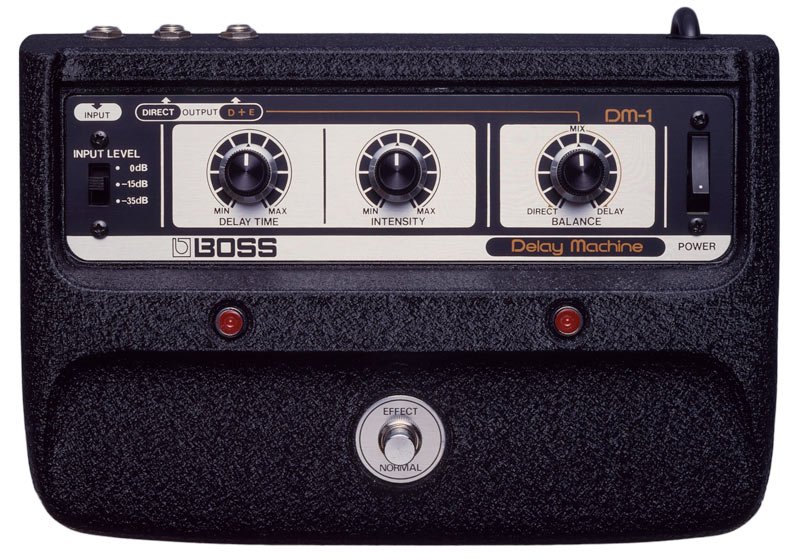
The DM-1 Delay Machine, the first of many delay pedals from BOSS.
Those familiar with the legendary BOSS CE-1 Chorus Ensemble (the world’s first chorus pedal) will notice that the DM-1 uses the same heavy-duty metal chassis and AC power configuration, as both effects were in production in the same era. Since the DM-1 was produced for less than two years, it’s a rare bird on the used market, and commands some very high prices if you can find one.
1981: DM-2 Delay
BOSS’ next Delay Machine was the now-classic DM-2. The company’s compact pedal series had really started to take off since its introduction in 1977, so it was an obvious progression to shrink the abilities of the DM-1 into that smaller format. For the DM-2, BOSS employed a bucket-brigade device (BBD), as opposed to the CDD used in the DM-1.
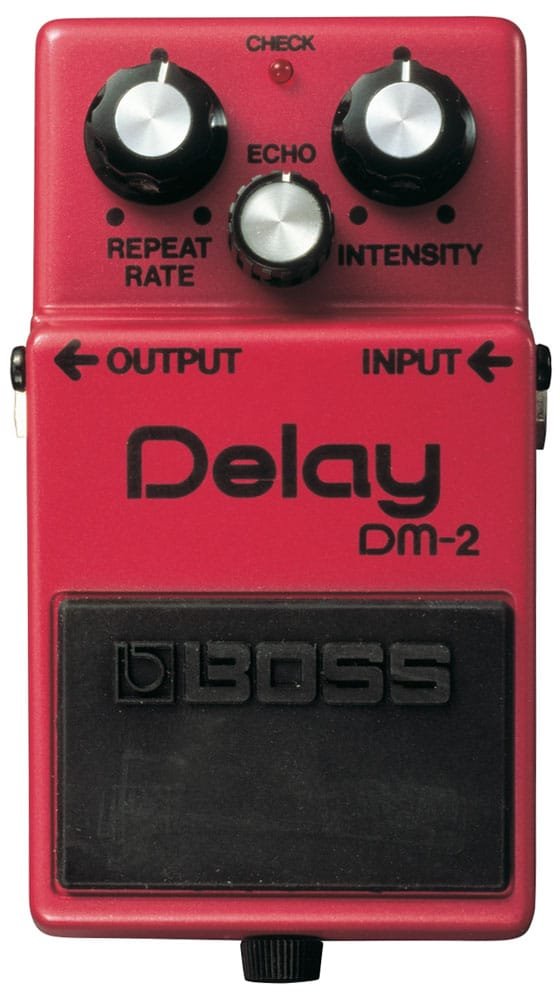
BOSS DM-2 Delay.
To achieve a maximum of 300 milliseconds delay time, BOSS engineers had to stretch the capabilities of the BBD chip used in the pedal. One of the ways they did this was to limit the frequency response of the effect sound. This compromise contributed to the DM-2’s characteristic warm, enveloping tone, which blends so well with a guitar or any other input signal.
Over 30 years after it was discontinued, the DM-2 remains highly sought-after by players everywhere, and is a hot commodity on the used pedal market. (The Waza Craft DM-2W, introduced in 2014, faithfully recreates the DM-2’s original sound while adding additional range and features.)
1983: DD-2 Digital Delay
BOSS and Roland are widely recognized for creating many milestone products in the music gear industry, and the DD-2 is most certainly one of them. The world’s first digital delay in stompbox form (and also the first digital pedal of any type from BOSS), the DD-2 put the much higher audio fidelity and increased delay range of studio rack processors within easy reach of every musician.
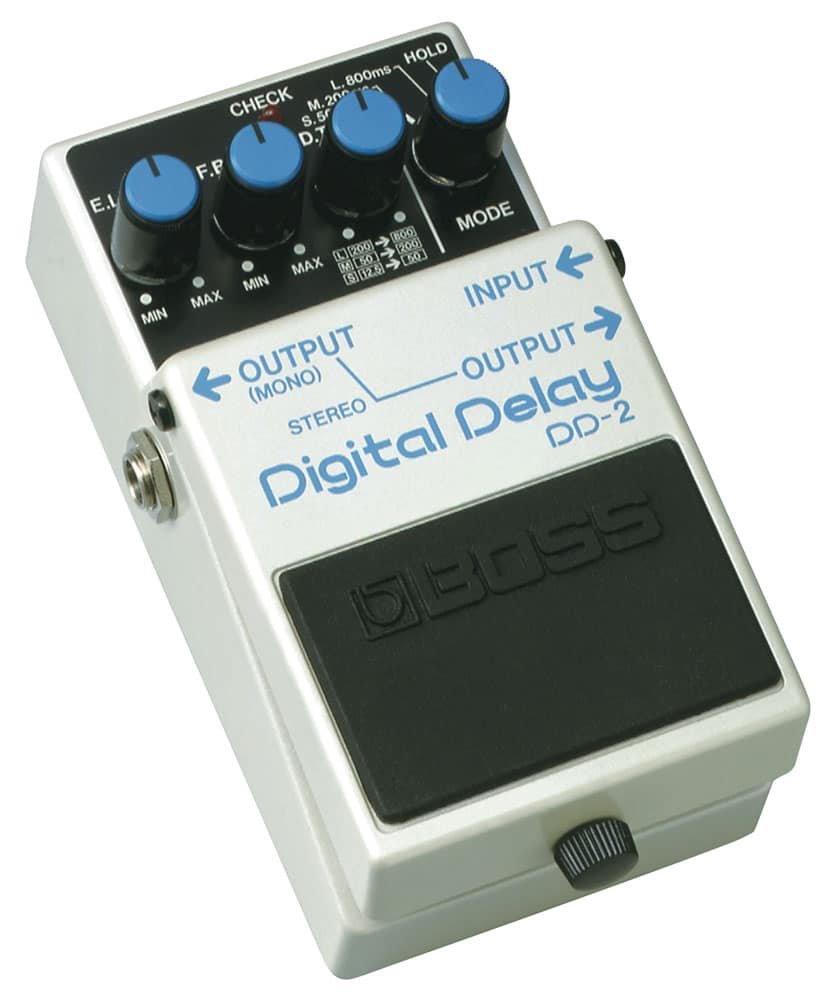
In the early ‘80s, digital technology was just emerging in music products, and they were typically expensive as a result. Roland’s flagship digital delay at the time was the SDE-3000, a rack unit regularly used in recording studios. Thanks to its rich, guitar-friendly sound, it also found a home in large-scale rack rigs used by serious pro players. However, the SDE-3000’s cost and form factor was beyond the means of many working musicians and casual players at the time.
The SDE-3000 used a custom IC chip built specifically for the product; the original concept of the DD-2 was born when the BOSS engineers discovered, to their surprise, that this powerful chip would actually fit inside a compact pedal chassis (though just barely). With that, the next formidable steps were to fit the rest of the electronics in as well, and to power it all with a 9-volt battery!
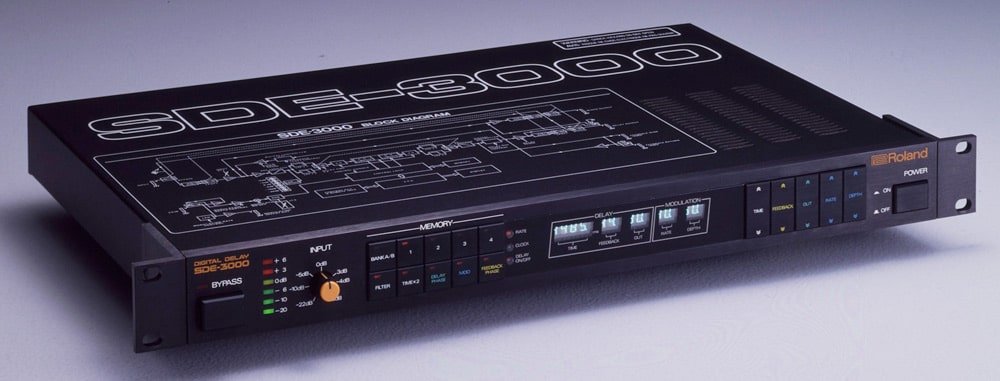
After an intense development period, the DD-2 was released. With its max delay time of 800 milliseconds and clear-yet-warm tone, the pedal was an instant smash and a must-have item. The DD-2 set the standard for the flurry of digital delay stomps that would come after from BOSS and other manufacturers, and every one of them owes its heritage to this revolutionary pedal.
1984: DM-3 Delay
While the digital DD-2 was taking off in popularity, the analog DM-2 remained in the lineup for a time as a less expensive pedal delay alternative. Its replacement, the next-generation (but still analog) DM-3, was slightly more affordable. Evolving from the DM-2, it included some design tweaks that cleaned up the delay repeats for a clearer sound with less noise, an ever-present engineering challenge when trying to get the best performance out of analog BBD circuits. The DM-3 also featured a Direct Out jack for sending dry and effect signals to two separate amps, as well as some unique knobs not seen on any other BOSS pedals before or since.
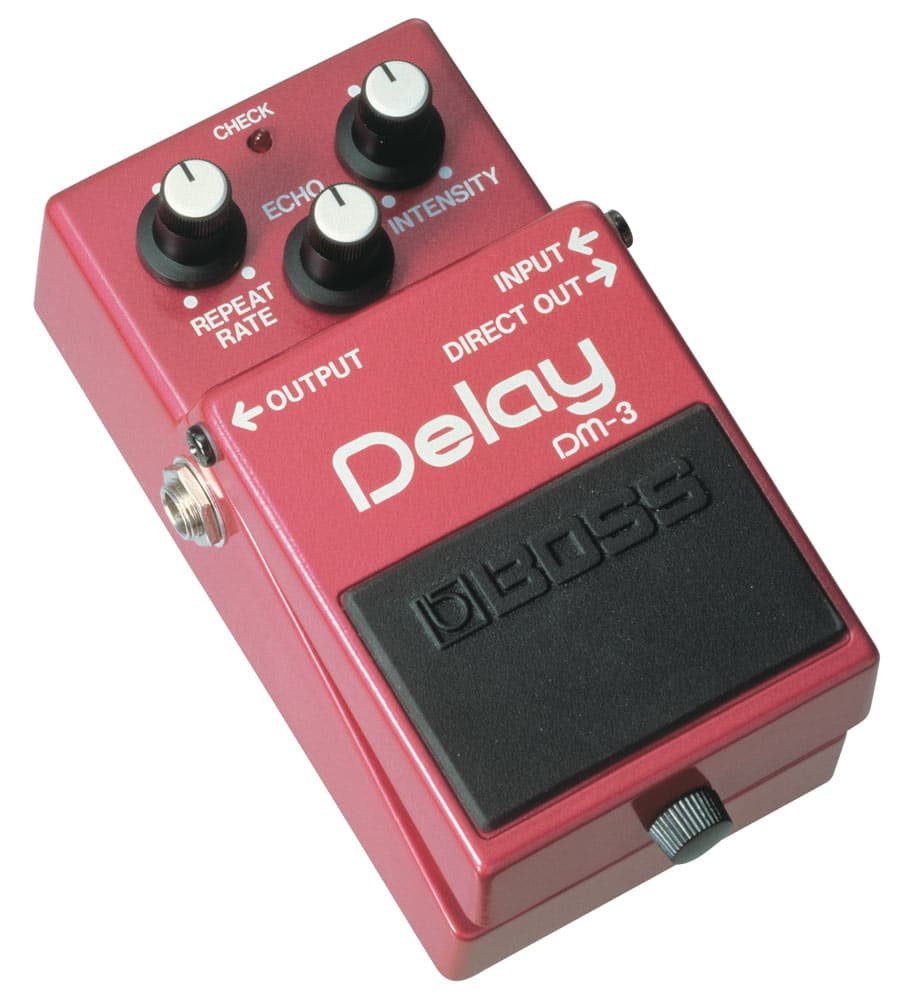
Though many effects aficionados cite the DM-2 as having superior tone, the DM-3 really sounds quite similar to my ears. It’s perhaps a touch less gritty and more refined in the delay repeats, but that can be a good thing in many applications.
By the late ‘80s, digital tech was taking over in the delay world, and the DM-3 was discontinued in the middle of 1988. It was the last all-analog delay pedal in the BOSS lineup for 26 years, until the introduction of the Waza Craft DM-2W in 2014.
1985: DSD-2 Digital Sampler/Delay
For the DSD-2, BOSS took the delay capabilities of the DD-2 and added a phrase sampler function to the mix, which was quite a novel idea at the time. While samplers had started to hit the scene a bit earlier, they were typically high-cost devices used mainly in studios. True to the BOSS philosophy, they brought this evolving technology within reach of all musicians with the DSD-2.
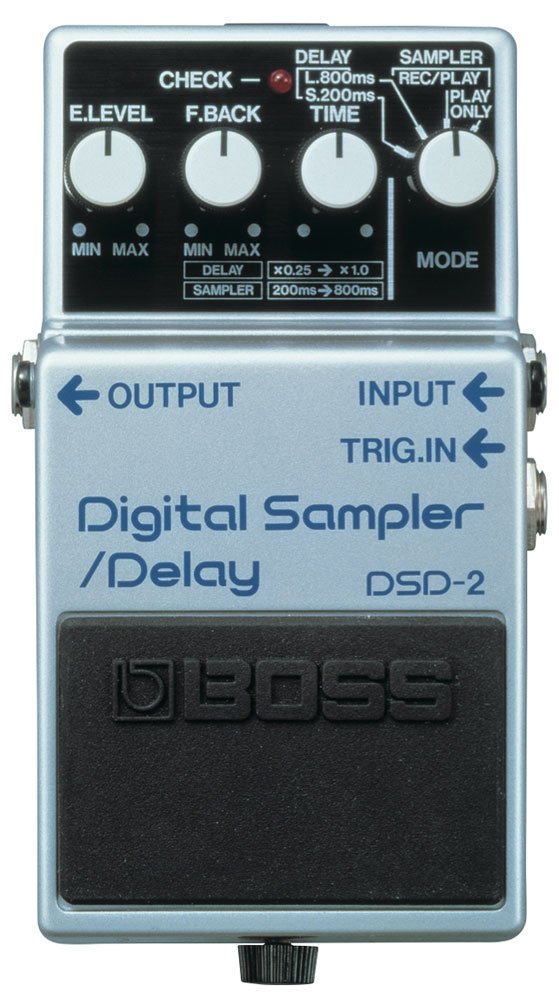
The phrase sampler in the DSD-2 can record (or “sample”) 800 milliseconds of audio and play it back “one-shot” style with a press of the pedal switch. There’s also a Trigger input for triggering the sample from a drum pad or other external source. While the sampling capabilities were rather limited by today’s standards, the DSD-2—and later DSD-3—can be viewed as early descendants of BOSS’ immensely popular Loop Station products that would come many years later.
1986: DD-3 Digital Delay
As digital technology began to take over the electronics world in the 1980s, the wholesale prices of components decreased rapidly. This allowed manufacturers to bring less expensive products to the marketplace, and the DD-2 was a direct beneficiary of this trend. However, instead of dropping the price on the DD-2, BOSS decided to replace it with the new, lower-cost DD-3 instead.

Other than minor cosmetic differences, the DD-3 is identical to the original DD-2. Taking this into consideration, the original stompbox digital delay has enjoyed uninterrupted production for over 30 years! This longevity serves as an enduring testament to the skill and expertise of the BOSS engineering and development teams in getting it just right the first time out.
1986: DSD-3 Digital Sampler/Delay
Like the DD-3, which was released at the same time, the DSD-3 took advantage of plummeting component costs to bring a less expensive version of the DSD-2 to the market. Other than the model names on the cases, the DSD-2 and DSD-3 are essentially the same pedals.
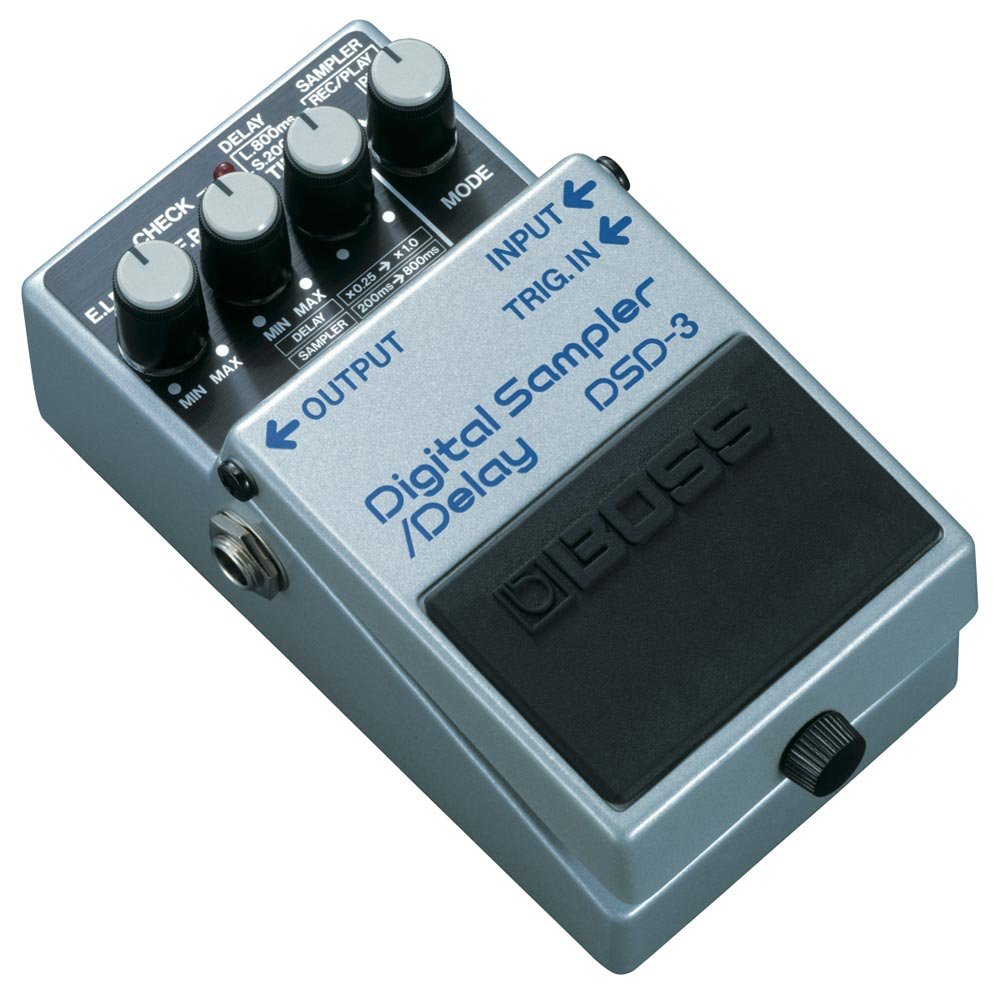
1987: RV-2 Digital Reverb
The RV-2 was another milestone for the industry: the world’s first digital reverb pedal. Why am I including it here? Because delay functionality is offered as one of its many sound modes. When used in stereo, the RV-2’s Delay mode functions as a panning or “ping-pong” delay, where the repeats alternate between the left and right outputs.
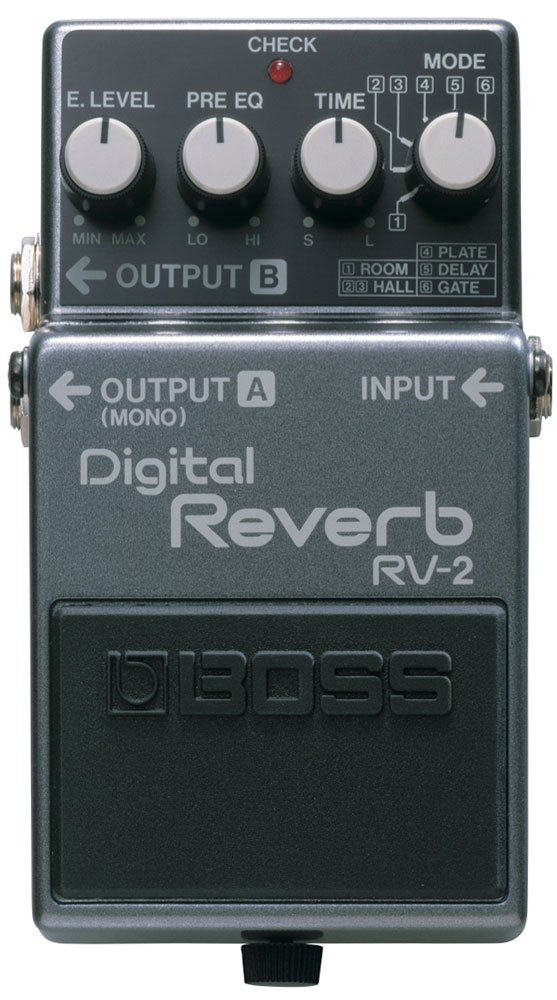
(On a side note, digital reverb itself is technically a time delay effect; it uses many closely spaced delay repeats and other processing to produce the final sound. However, most musicians think of delay and reverb as individual effects types—and use them in somewhat different ways—so we’re treating them as separate effects categories in this rundown.)
While we’re talking about the RV-2, it should be noted that it was an important technical achievement for BOSS, in that it used an all-new custom DSP chip developed by the company. Originally designed for the RRV-10 Digital Reverb in the MICRO RACK series, this first-generation chip offered an unprecedented amount of processing power in a compact pedal. It also pulled a lot of current, so the RV-2 could only run on the supplied AC power adapter (no batteries).
1987: PS-2 Digital Pitch Shifter/Delay
Though the popular OC-2 Octave pedal had been available since 1982, the PS-2 was the very first BOSS pedal with continuously variable pitch shifting. It can be set up to one octave up or down, or to any interval in-between with Manual mode. A Tuner out jack allows you to connect to an external tuner (like the era’s BOSS TU-12) and accurately fine-tune the pitch interval as you twist the Manual knob and play. Yes, that’s a little inconvenient by today’s push-button standards, but it was bleeding-edge at the time. In one of its Delay modes, the PS-2 offered up to two full seconds of delay time, another BOSS pedal first.

1994: RV-3 Digital Reverb/Delay
The RV-3 was the successor to the RV-2, and featured great performance gains thanks to a next-generation custom DSP and general improvements in digital technologies. It also cost less, and could run on a 9-volt battery. Along with improved reverberation, the delay capabilities were greatly expanded in the RV-3 as well (so much so that “Delay” was added to the product name). Straight delay with up to two seconds is available, as well as modes that combine the delay effect with the pedal’s four different reverb types. As you can imagine, all these cool capabilities resulted in one wildly popular pedal!
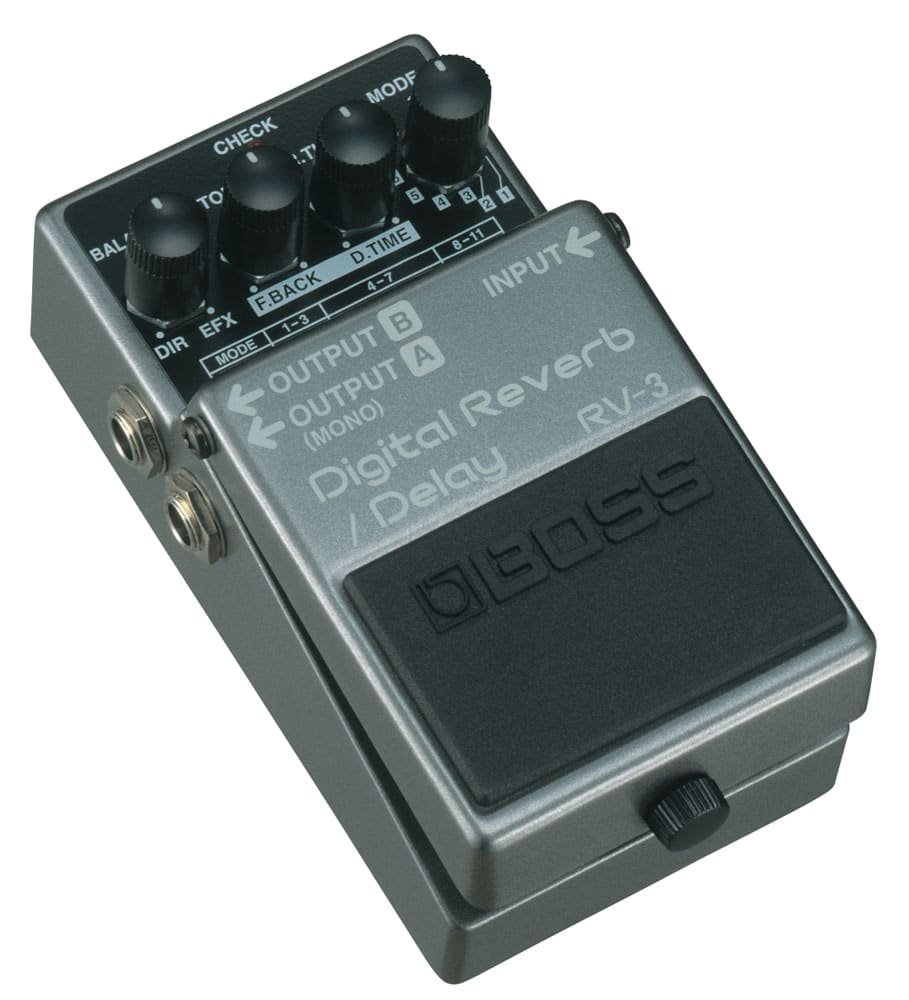
1994: PS-3 Digital Pitch Shifter/Delay
Like the RV-3, the PS-3 incorporated newly developed DSP and current tech to deliver superior performance to its predecessor. While the delay functionality is the same as the PS-2, the pitch-shifting abilities were really expanded. Pitch can be shifted up or down over two full octaves, and a Detune mode allows you to create chorus-like tones. In addition, each of these functions can be used in dual modes, where you can create two independent pitch shifts at once. Each can also be sent to separate outputs when the pedal is used in stereo.
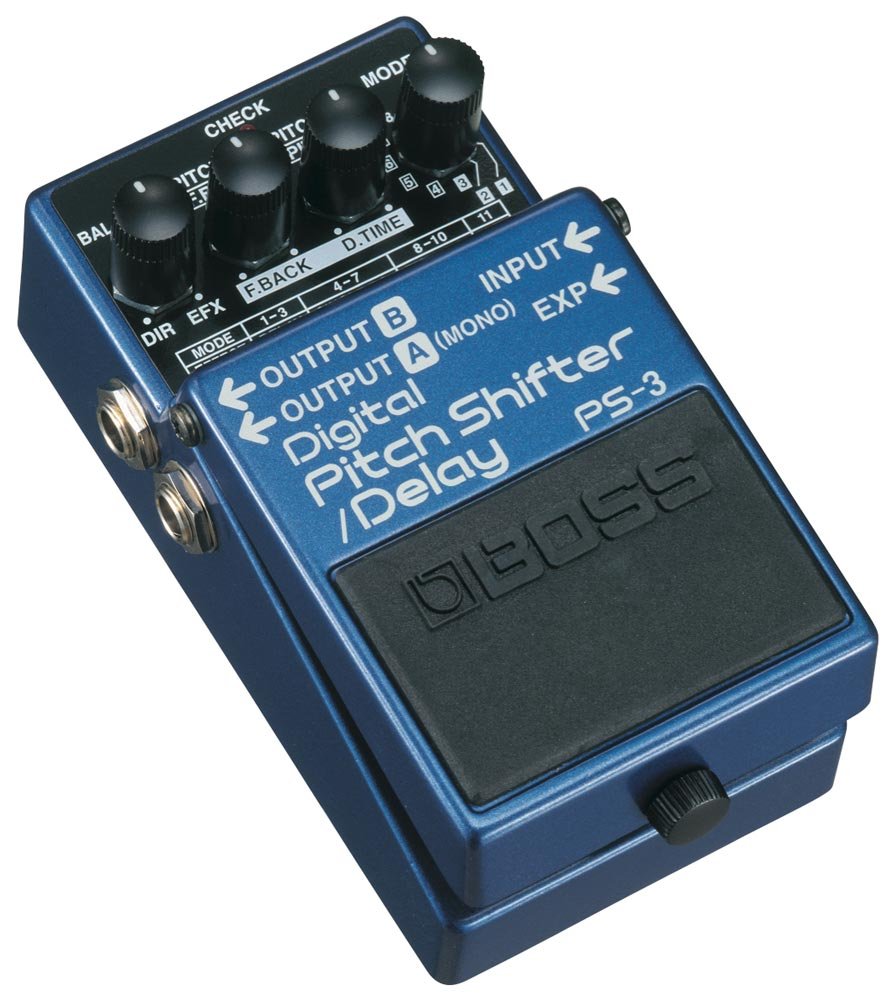
1995: DD-5 Digital Delay
If you’ve been reading carefully, you probably noticed that the RV-3, PS-2, and PS-3 pedals offer delay times up to two seconds, and that’s in addition to their non-delay features. That’s more than double the maximum 800 milliseconds provided by the DD-3, the only dedicated digital delay pedal in the lineup at the time of our current stop. BOSS addressed this performance gap with the DD-5, and added a lot of high-end features along with it.
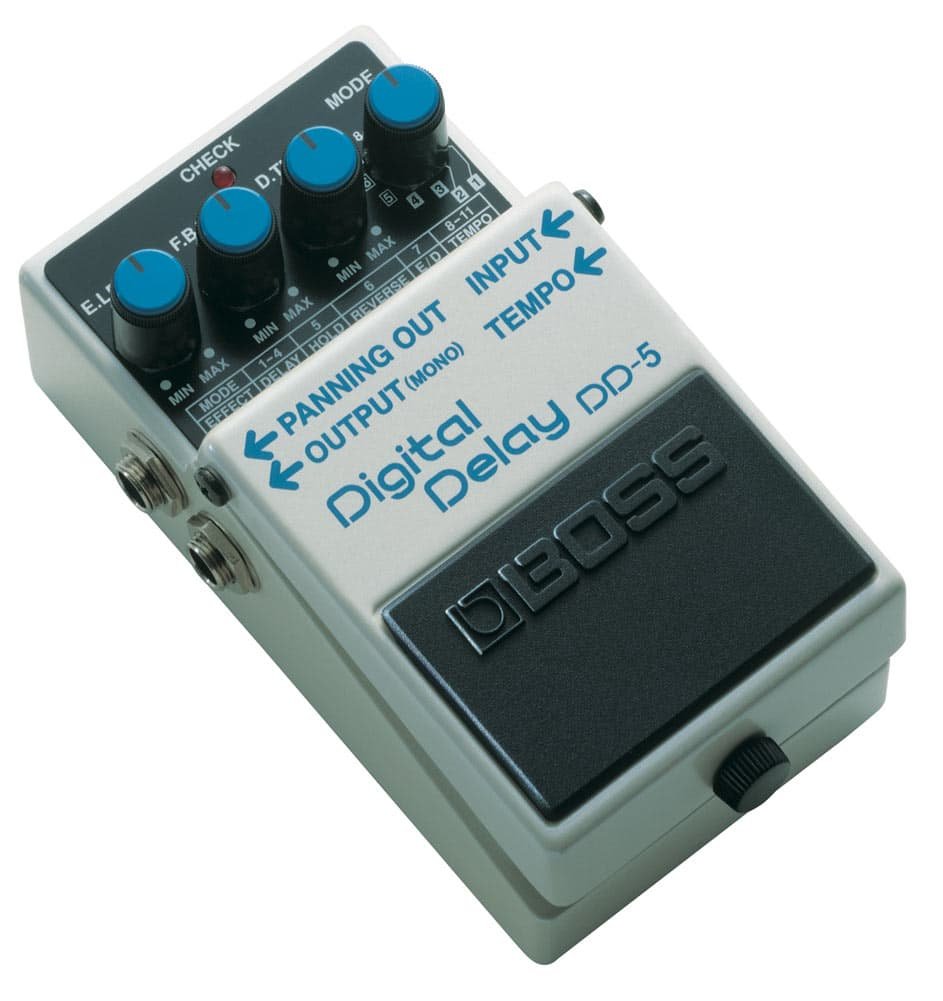
Along with the ability to provide two seconds of delay time, the DD-5 offers eleven different delay modes, making it the most advanced pedal delay at the time by far. Reverse delay appears for the first time on a BOSS pedal, and Hold has evolved from its “freeze-style” momentary functionality in the DD-2/DD-3 to work as a simple two-second looper. Tempo-sync delays are also available, with the ability to tap in the time via an external footswitch. Stereo outputs allow for panning delay or separate direct/effect splits, depending on the mode.
The DD-5 was a great success, and BOSS originally thought that it would replace the DD-3. However, the simplicity and great sound of the DD-3 continued to hit the sweet spot for lots of players, and is the reason why it remains in the lineup to this day.
2002: DD-6 Digital Delay
Seven years on, the DD-6 updated the DD-5’s impressive feature set with expanded capabilities. First off, the max delay was increased to 5.2 seconds (when using Long Delay mode), and the tap tempo functionality could now be accomplished with the onboard pedal switch. The Hold function was also enhanced, with 5.2 seconds of recording time and sound-on-sound overdubbing. Finally, the pedal also offers true stereo I/O. In addition to these feature tweaks, the DD-6 introduced an all-new Warp mode, which allows you to easily create tape-style pitch and oscillation effects just by pressing and holding the pedal switch.
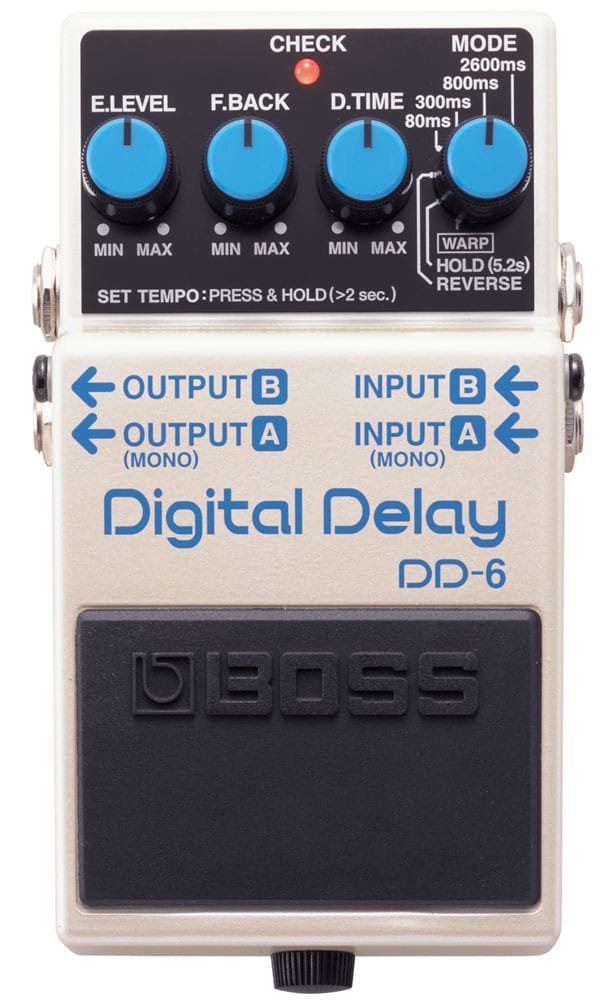
2003: DD-20 Giga Delay
First launched in 2001, the BOSS Twin Pedal series aimed to provide some of the enhanced functionality found in the company’s multi-effects units (extended features, programmability, etc.), while retaining the intuitive, hands-on operation of the single-effect stompbox. This approach was widely embraced by creative musicians everywhere, and the series soon began to expand.
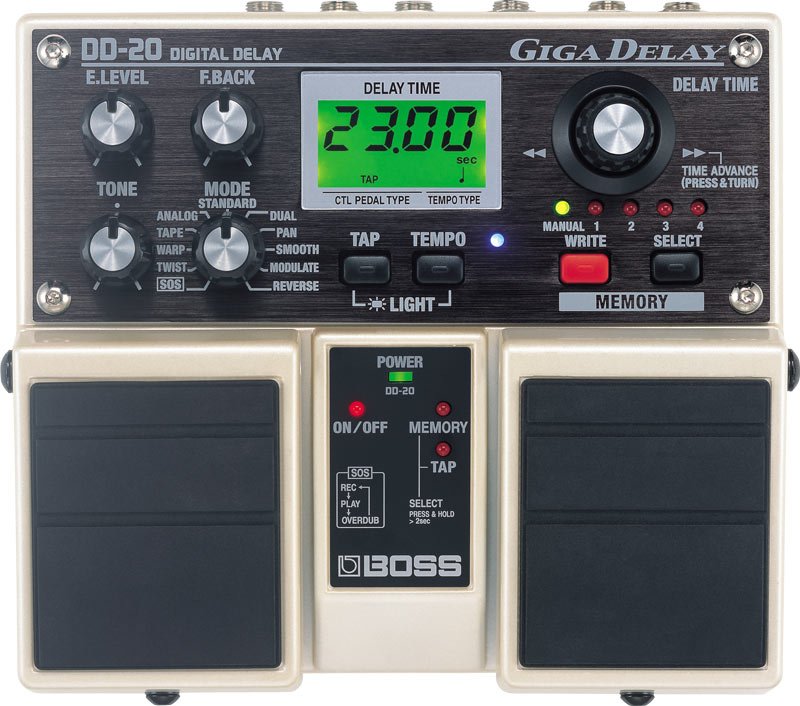
In 2003, the DD-20 brought digital delay to the Twin Pedal format, and it quickly became the top choice for players looking for advanced delay features in stomp form. Eleven sound modes provide a variety of delay flavors, including the standard DD-3 style delay, warm BBD analog and tape emulations (including dual-head Space Echo effects), reverse, SOS (sound-on-sound), and more. Warp mode from the DD-6 is also included, as well as new Smooth and Twist modes for additional unique sounds.
With a whopping 23 seconds of delay time, handy LED display, and memories for storing four delay settings in addition to the current manual setting, the DD-20 provided capabilities that put it at the top of its class when introduced (and that still outrank most pedals today). The two onboard pedal switches make tap tempo, memory select, and other delay operations easier, and an external switch can be plugged in for additional control.
2007: RE-20 Space Echo
Roland’s Space Echo products from the ‘70s and ‘80s are considered to be among the very best tape-based delay units ever made, and are still highly prized today. Though there were a number of different models through the years, the RE-201 Space Echo was both the enduring benchmark and most popular. With three separate playback heads, built-in spring reverb, and distinctive 12-position Mode Selector, the RE-201 was easy to use and capable of a wide range of creative, organic echo effects. As such, it found a home in many different music applications, from recording sessions to arena performances. The Space Echo was also an important component in the reggae-driven dub sounds created by early electronic music artists.
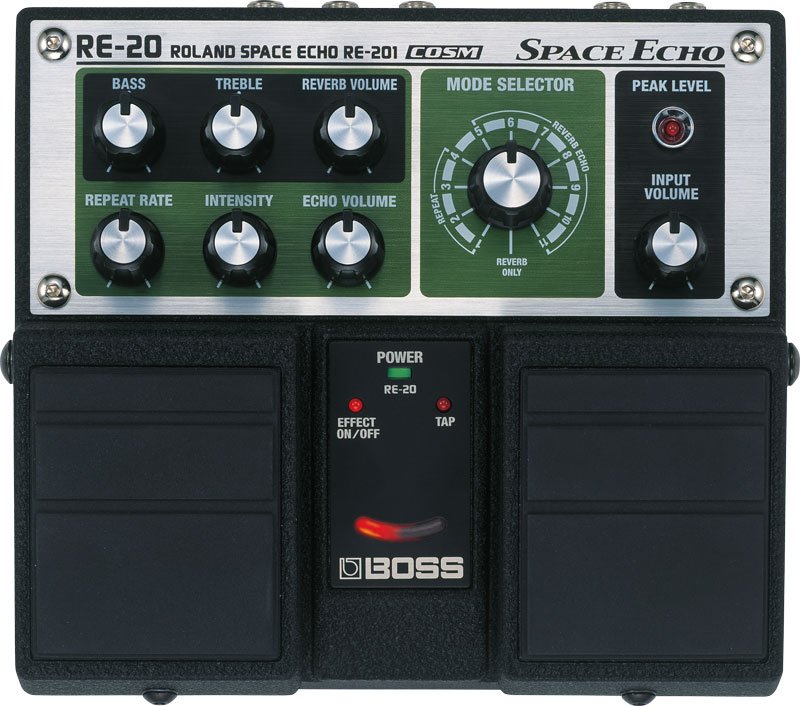
Housed in the Twin Pedal format, the RE-20 employs BOSS’ COSM technology to fully capture the classic RE-201 Space Echo from stem to stern. All of the original’s controls are completely replicated in the RE-20, and adjusting them in real time produces identical behaviors as well. For example, tweaking the Repeat Rate not only adjusts the delay time, but also mimics the unique pitch-shifting behavior that occurs in the RE-201 as its physical motors gradually slow down or speed up the tape loop.
The RE-20 includes some modern conveniences as well. Stereo operation is supported, and the delay time can be tapped in with the right pedal or an external footswitch. A Twist function is also available, which adjusts multiple parameters with a press of a pedal; this makes it easy for guitarists to replicate the dub-style runaway echo effects originally popularized by twisting the RE-201’s panel knobs. (Of course, similar effects are also possible by manually turning the RE-20’s knobs.) And, thanks to the RE-20’s digital design, there’s no need for periodic tape replacement and other maintenance hassles!
2008: DD-7 Digital Delay
With the DD-7, the flagship delay in the BOSS compact series has evolved over its popular predecessor, the DD-6. The max delay time has been increased to 6.4 seconds, and there’s a jack for connecting an external footswitch or expression pedal to control functions such as tap tempo, feedback, and delay time. Additionally, Hold mode now provides up to 40 seconds of sound-on-sound recording, allowing the DD-7 to function quite capably for looping tasks. The pedal also includes Analog and Modulate modes borrowed from the DD-20. All in all, the DD-7 delivers an amazing amount of delay versatility in one small pedal.
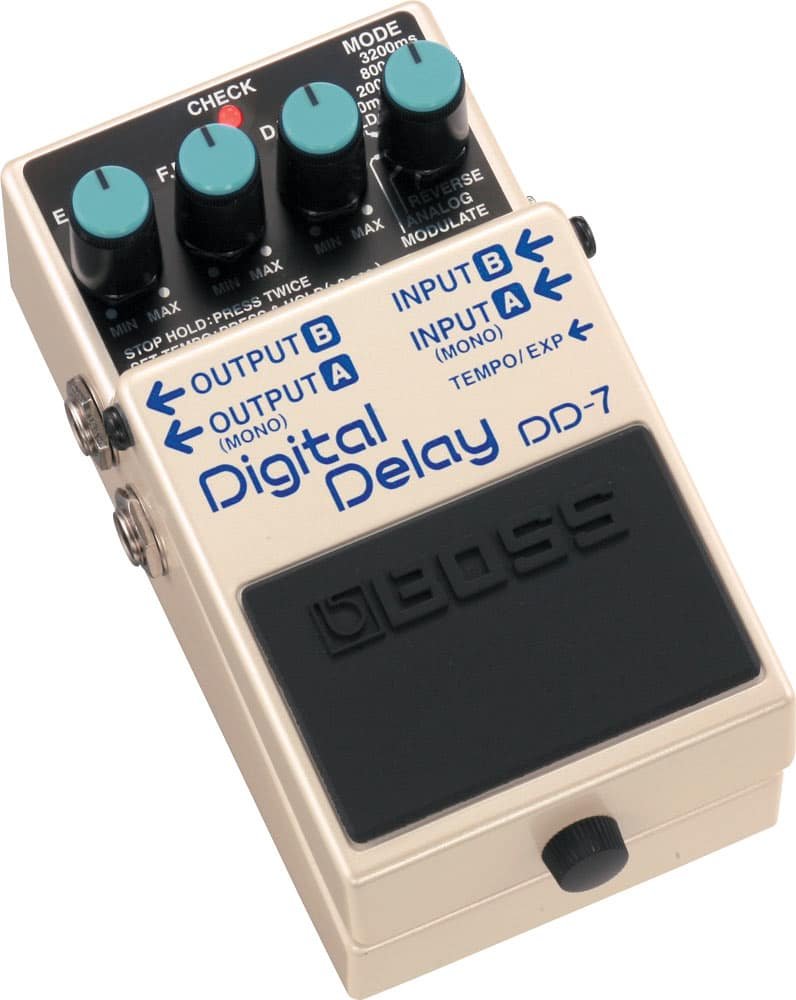
2013: TE-2 Tera Echo
The TE-2 holds the distinction of being the 100th model in BOSS’ long-running compact series. Embodying the company’s spirit of innovation through the years, the TE-2 delivers a truly unique ambience effect never heard before in any other single pedal, from BOSS or anyone else.
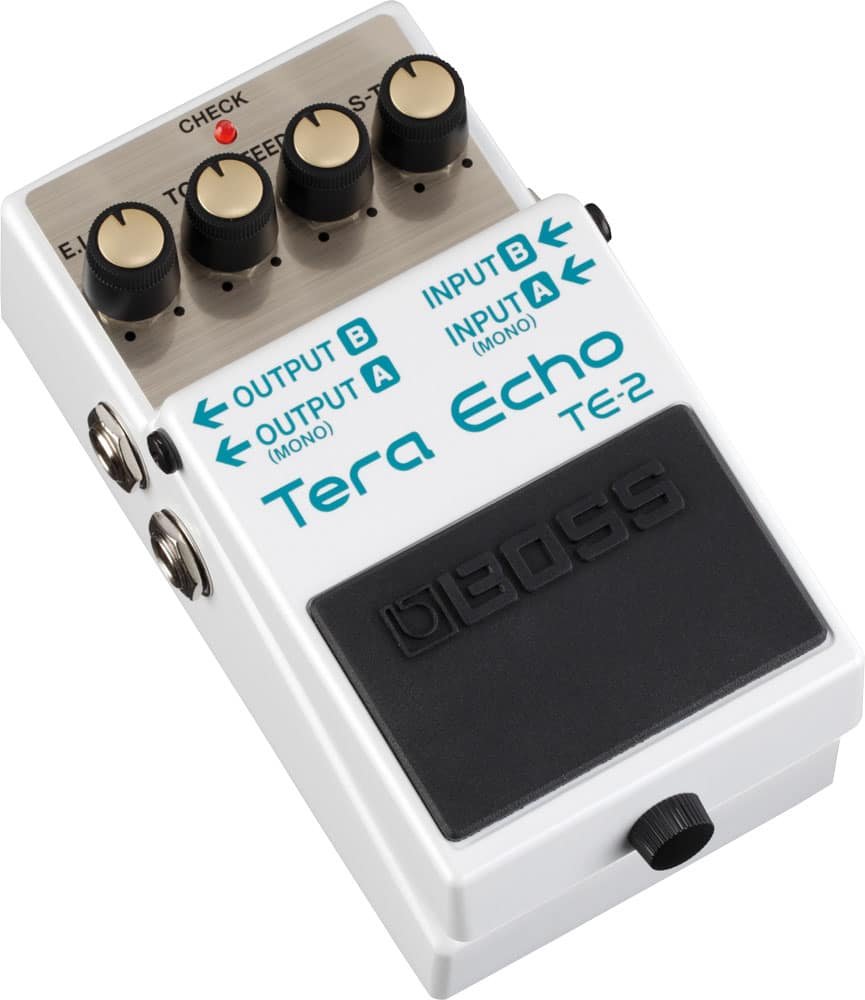
Powered by BOSS’ newly developed Multi-Dimensional Processing (MDP) technology, the Tera Echo produces a complex sound that responds dynamically to your playing register and dynamics. The resulting tone has elements of delay, reverb, filtering, and pitch modulation, and you can twist the pedal’s knobs to dial up all sorts of sounds, from subtle reverberation to long, swirling ambient washes. Pressing and holding the pedal switch engages the cool Freeze function, which holds the effect sound to provide an ambient bed for playing over the top.
2014: Waza Craft DM-2W
Soon after the DM-2 and DM-3 analog delays went out of production in the ‘80s, guitarists looking for an old-school alternative to digital units started to seek them out on the used market. While both pedals are sought after, it’s the DM-2 that’s the most highly regarded, thanks to its warm, grungy delay tone that oozes retro musicality.
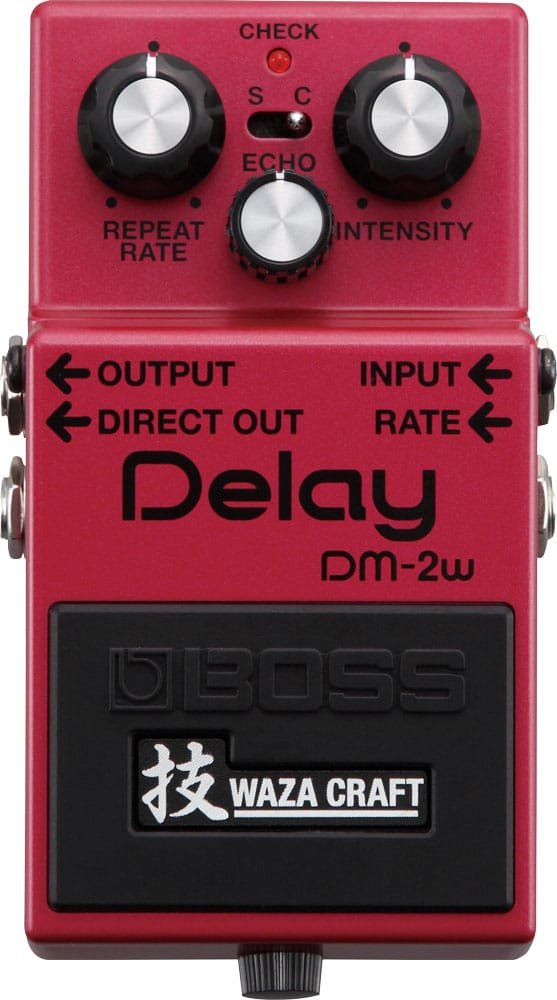
Over three decades after its demise, the pedal has returned in the form of the Waza Craft DM-2W. In Standard mode, the DM-2W is a complete replica of the DM-2, delivering the same rich, all-analog tone that made the original such a classic. But BOSS wanted to go beyond a simple reissue, so they added a Custom mode that more than doubles the available delay time to 800 milliseconds, while slightly cleaning up the grittiness for more definition and clarity. The pedal also has the ability to send dry and effect sounds to two different amps, a feature grabbed from the DM-3. Finally, there’s a jack for controlling the delay time with an expression pedal, a handy modern feature not available in either the DM-2 or DM-3.
2015: RV-6 Reverb
The RV-6 is the latest reverb pedal from BOSS. It updates the mighty RV-5, which has reigned as the industry standard for over 12 years. While its predecessor sounds exceptional, the RV-6 kicks things up to new heights, delivering rich, expansive tones equal to or exceeding boutique pedals and studio rack units costing much more.
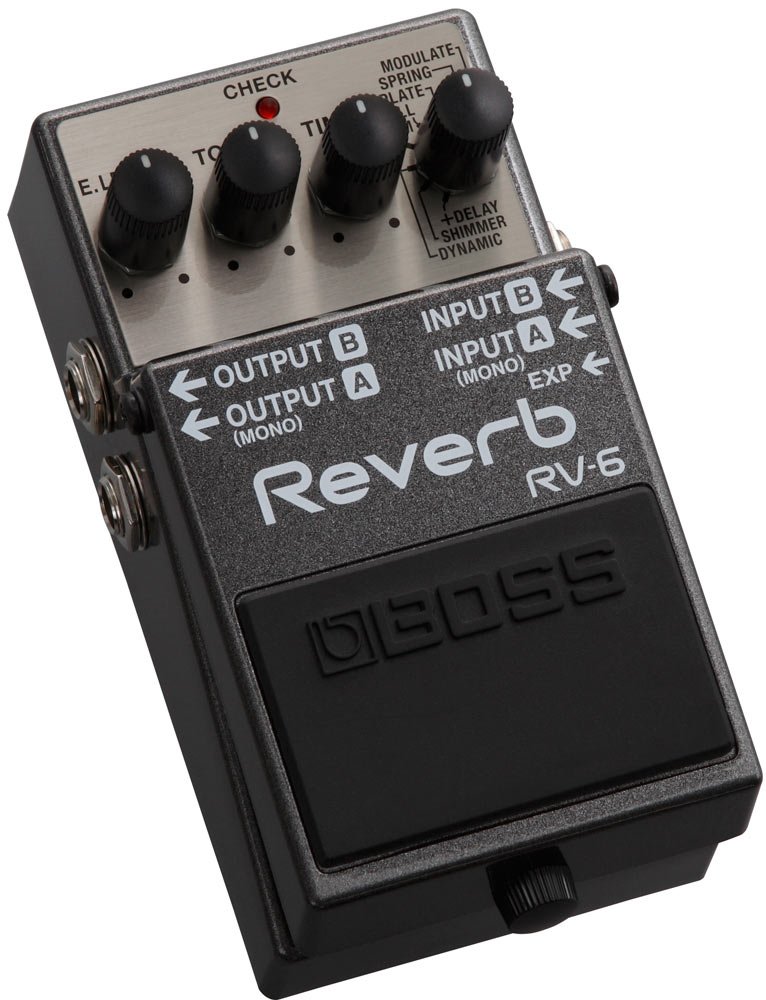
As detailed earlier, delay modes were present in the RV-2 and RV-3 pedal. However, the next-generation RV-5 focused on reverb only. Due to many user requests, some delay functionality has been brought back in the RV-6. In +Delay mode, echo and reverb are blended together to create an immense, full sound. As you tweak the Time and Tone knobs, the reverb and delay characteristics are adjusted in multiple ways under the hood, providing ideal combo tones at every setting.
2015: DD-500 Digital Delay
With its exceptional audio quality, wide-ranging sound modes, and easy usability, the DD-500 is the most powerful stompbox delay ever to hit the market, bar none. And with its incredible price-to-performance ratio, it’s by far the best value as well. If you’ve been looking for the delay pedal of your dreams, BOSS has really delivered with the DD-500!
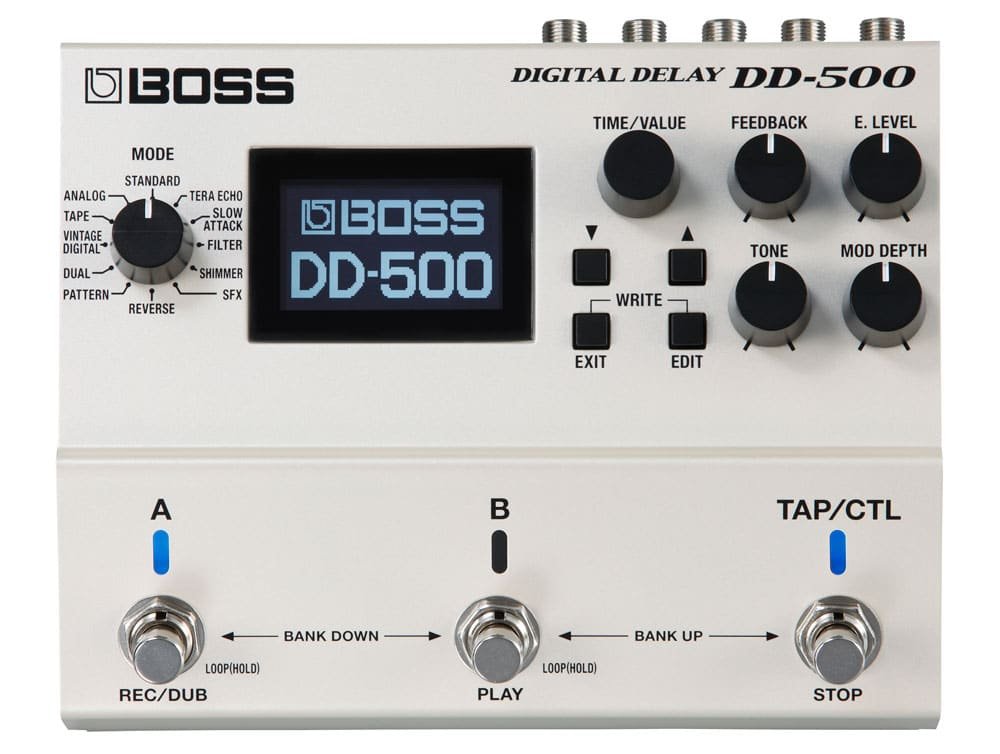
In short, BOSS has taken everything they’ve learned about delay effects over the last four decades and dropped it all into the DD-500. It can recreate the sounds of every delay pedal throughout the history of the BOSS lineup, plus famous units like the Roland SDE-3000 and Space Echo. In addition, it has a ton of fresh, modern effects that combine delays with filtering, modulation, pitch shifting, and more. And that’s just the start!
That’s a Wrap…For Now
Wow—that’s a lot of cool pedals over the years! Throughout this historic review, a common thread is certainly clear: BOSS is always innovating, striving to create top-quality products that support the needs of musicians of all levels, from amateur players to high-end pros ripping it up nightly for audiences in the thousands. They’ve certainly achieved that goal, as BOSS pedals continue to be embraced by players everywhere, inspiring them to take their music to new levels of creativity, originality, and expression.

